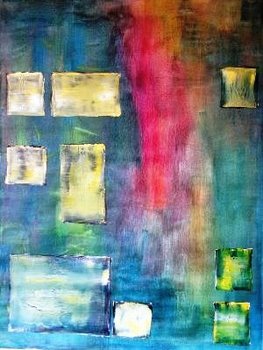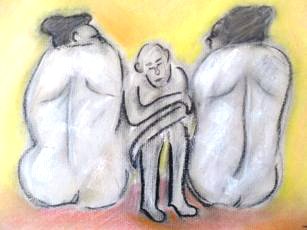

Let me introduce you to Muffin, our adorable Siamese cat (lilac point), who has just celebrated her first birthday. I had to share these photos with you after being inspired by an image of Minx's cat on her blog, The Inner Minx.
I'm not sure if the title of this post is true for all writers, but it certainly is for many that I know or have read about. The celebrated New Zealand writer Katherine Mansfield often talked about her cat, and seemed to believe that it gave her inspiration and strength.
How many other writers - and don't forget that many live isolated, solitary existences - rely heavily on the presence of their dogs and cats. I find that having Muffin curled up somewhere close is comforting when I'm sailing off on a long and arduous section of storyline. Also, I soak up her energy and passion as she darts forward and tries to get her gorgeous paws all over my keyboard. What a wonderful way to get motivated for a writing session!
It seems that academics also share the belief that cats and literary endeavours can go hand in hand. I have heard lots of good things about the book Writing With Cats: An Inspirational and Practical Guide For Writers by Gerald J. Schiffhorst, an English professor in the US.
A blurb on Amazon.com, says: "An experienced writing teacher uses humor to help emerging writers develop greater confidence and shows why writers and cats have long had a creative relationship. Gerald J. Schiffhorst, Ph.D., Professor Emeritus of English at the University of Central Florida, has taught writing and literature for more than 35 years. He has published eight books, including McGraw-Hill's "Short Handbook for Writers" and is now an editorial consultant in Winter Park, Florida."
On the website writer-on-line.com Rachelle Nones writes:
'Throughout the book, Schiffhorst closely examines the many ways in which cats function as a literary muse. Schiffhorst believes strongly that every writer can benefit from utilizing a catlike point-of-view towards the writing process; in particular, the cat’s strong powers of observation, focused attention and contemplation. He advises his writing students, 'If you are serious about writing, don’t buy a new computer; what you need is a cat.'
For an added treat, there’s a listing of notable author’s [sic!!] cats, stories inspired by cats, and historical cat tales. In one chapter, Schiffhorst highlights the role of cats in literary history. He reports that Samuel Johnson visited the fishery daily to buy oysters for his beloved cat Hodge; William Butler Yeats once cut off a part of his coat so as not to disturb a sleeping cat at the Abbey Theatre in Dublin; and the French poet Stephane Mallarmé once wrote, “mon chat est un compagne [sic!; compagnon] mystique.” (Translation: My cat is a mystical companion.)"
(Sorry, but I couldn't leave those errors go unchecked!)
I, for one, needed no convincing that a cat was an important part of my writing package. They can add so much to the environment we set up for ourselves, the convivial digs needed for the production of something vital.
Also, while she is here, Muffin would like to join me in sending a special get well message to Noelle, one of this blog's most regular and loyal readers, who has had a stay in hospital. We send all of our best thoughts your way.
















































